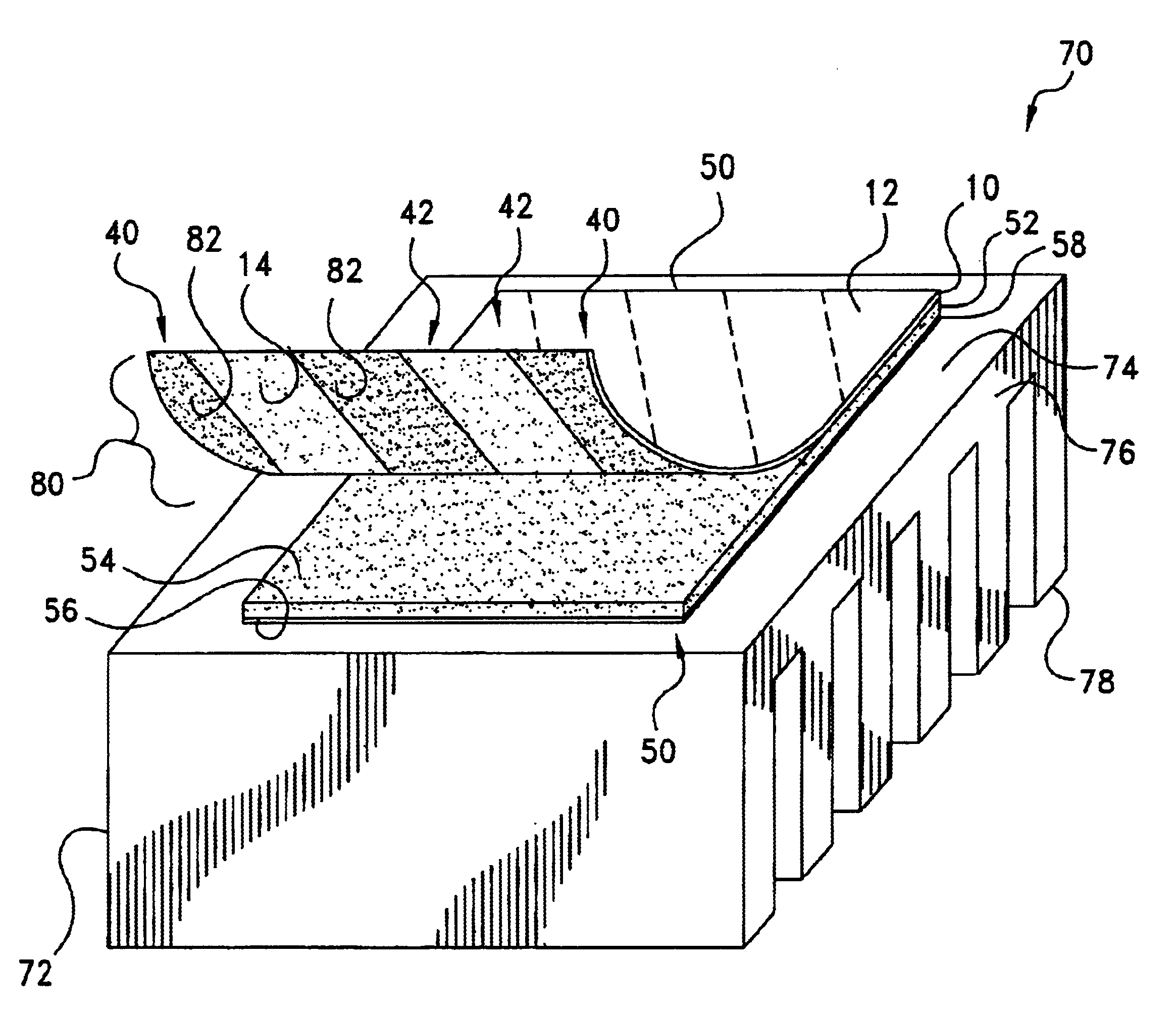Thermal interface material having a zone-coated release linear
a technology of thermal interface material and zone coating, which is applied in the direction of film/foil adhesive, semiconductor/solid-state device details, lighting and heating apparatus, etc., can solve the problems of increasing complexity of circuit design, increasing design complexity, and shrinking of device size and other issues
- Summary
- Abstract
- Description
- Claims
- Application Information
AI Technical Summary
Benefits of technology
Problems solved by technology
Method used
Image
Examples
example 1
A platinum-cured silicone release coating (Dow Corning Corp., Midland, Mich.) was selected for use in demonstrating the feasibility of the zone-coated release liners of the present invention. The coating was formulated as follows:
Zone coated liner sheets were prepared by cutting 1 / 8-inch strips of 4 mil low tack vinyl tape (Semiconductor Equipment Corp., Moorpark, Calif.) and manually applying the strips to a 2 mil thick polyester film (The Pilcher Hamilton Co., Hinsdale, Ill.). The strips were spaced about 1 / 8-inch apart.
A solution of the release coating adjusted to 5% solids was applied to the liner sheets using an EZ Coater Drawdown machine and a #6 wire rod. The wet samples were immediately placed into a 225.degree. F. oven for 5 minutes to evaporate the solvent and to initiate curing. After drying, the tape strips were removed and the silicone zones were checked for sharpness by running a 48 dye pen across the film. The dye was observed to wet the untreated zones and to bead on...
example 2
In order to simulate a typical end use application, an application test was developed which was used to assess the performance of die cut pieces with manual liner removal. A 0.5 mil layer of an acrylic PSA was transfer coated to the thermal compound side of the laminated samples of Example 1. One inch square pieces were cut from the PSA-coated samples, and the zone orientation was noted. The adhesive side of the samples was applied to a steel panel, which then was cycled to 110.degree. F. for one hour and equilibrated to room temperature for two hours. Thereafter, liner removal was evaluated by manually pulling the liner from the thermal compound. Lift-off and compound splitting were evaluated and recorded on 20 sample pieces of machine, transverse and 45.degree. zones oriented in the pull direction.
The test results are shown in Table 3. Untreated polyester film was used as a control and compared to fully coated samples and machine direction, transverse, and 45.degree. zone coated s...
PUM
| Property | Measurement | Unit |
|---|---|---|
| particle size | aaaaa | aaaaa |
| clamping pressures | aaaaa | aaaaa |
| thick | aaaaa | aaaaa |
Abstract
Description
Claims
Application Information
 Login to View More
Login to View More - R&D
- Intellectual Property
- Life Sciences
- Materials
- Tech Scout
- Unparalleled Data Quality
- Higher Quality Content
- 60% Fewer Hallucinations
Browse by: Latest US Patents, China's latest patents, Technical Efficacy Thesaurus, Application Domain, Technology Topic, Popular Technical Reports.
© 2025 PatSnap. All rights reserved.Legal|Privacy policy|Modern Slavery Act Transparency Statement|Sitemap|About US| Contact US: help@patsnap.com



